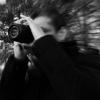CL/TL2 sensor for milky way photos?
-
Recently Browsing 0 members
- No registered users viewing this page.
-
Similar Content
-
- 18 replies
- 1,926 views
-
- 1 reply
- 597 views
-
- 3 replies
- 270 views
-
- 6,440 replies
- 535,086 views
-
My way today
By jaapv,
- 1 reply
- 181 views
-




Recommended Posts
Join the conversation
You can post now and register later. If you have an account, sign in now to post with your account.
Note: Your post will require moderator approval before it will be visible.